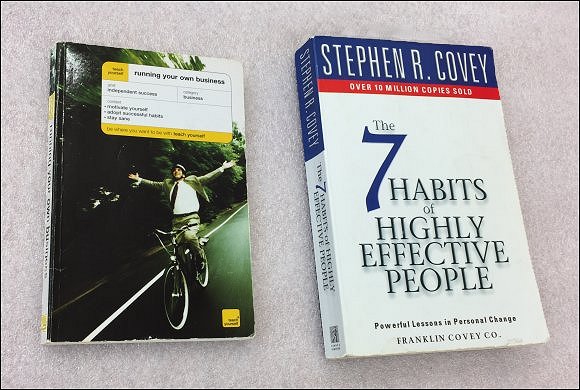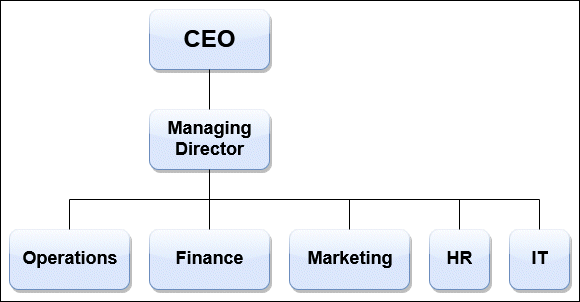Members of parliament, small children, the driver two cars in front of you, some of your work colleagues. What is the biggest reason that people don’t do things? And, even you. Sometimes you don’t do what you want! Why not?
What is the biggest reason? The short answer is “they don’t know how”.
And there are two principal ways to fix this. The first one is probably everything you need if you’re trying to design a personal plan. The second one is the one which will be of particular help to anybody who needs to put the fundamentals of a business into place. That means a sound business plan, and that will lead to a sound business. Whether you’re reading this for personal reasons or for business reasons, everybody needs to start with 7 habits.
This blog has no affiliation with either of the two authors mentioned below. Nor is any commission received for these two recommendations. They are simply two brilliant books, and that’s why this blog is devoting attention to them.
The ones in the photo are old editions. Both have been read and re-read a number of times. When you’re a business coach it pays to reinforce the basics, regularly. The clients always want to start with the basics!

Stephen Covey – The 7 Habits of Highly Effective People
One thing that you need to understand at the outset is that when highly effective people read the book “The 7 Habits of Highly Effective People” they follow it carefully and they do exactly what is says. That means using a pen and paper exactly as directed. It means looking at the correct pages at exactly the right time. No cheating! There are no shortcuts to becoming highly effective!
Moreover, there is no advantage to be gained in skipping things. Quite the reverse actually! The book must be read in the order it’s laid out, and in the manner it prescribes. Highly effective people will secure great benefits by doing this just right.
Pay particular attention when (early in the book) you’re asked to do the funeral exercise. Do exactly what it says. Then persevere and read everything . . . properly . . . and later (in the second half) the story about the sand, the stones and the rocks will help all your plans fall into place.
Of course, if you don’t want to follow this advice then you don’t have to. But then again, you may not become as highly effective as you would like to. And we’re back to the title of this blogpost “what is the biggest reason that people don’t do things”? You can’t claim that you don’t know how to read a book properly!
There’s an old African proverb “give advice, if people don’t listen, let adversity teach them”.
Kevin Duncan – Running Your Own Business
When you’re trying to build your first business plan this book is a great place to start. It quickly cuts through the fog of unhelpful bank style business plans and instead focuses on what you need for your business. And that’s a business plan that works for you. Your plan will probably start off as a couple of pages and that’s enough. Highly refined, deeply purposeful, incisive and above all, meaningful.
Nobody ever shouted from the rooftops about the value of the plan that their bank demanded! If, later on, you need more finance and have to go to the bank to get it, then you’ll probably have to do a “business plan” for them as well. It’s not the same thing!
For a start, Duncan tells you to be “brutally honest” with yourself. Would you ever want to be “brutally honest” with your bank? You can see how Duncan’s mind works – this is for your benefit and nobody else’s!
Like Covey, Duncan is also an advocate of pen and paper. When he tells you to do a pen and paper exercise just do it. Don’t hang around looking for inspiration. If you wait around for the clouds to part and a bolt of lightning to strike you in the brain, you are not going to get much done.
All the best ideas come out of the process, they come out of the work itself. Things occur to you as you write your plan and by the time you finish you’ll be so glad you adopted the “just do it” approach. Inspiration is absolutely unnecessary and somehow deceptive. You may feel like you need this great idea before you can get down to work, though in real life that is almost never the case.
This book will help demystify what a business plan really is. It’s a marketing plan! OK, it has a bit about finance, and a bit about operations, but essentially it’s a “get more business” plan. So that means it’s just a glorified marketing plan!
The modern Chinese proverb about effective marketing says “man who stand on top of hill with mouth wide open wait long time for aromatic duck to fly in”.
Cost Benefit Analysis
Have you logged onto Amazon and bought these two books yet? The worst thing that can happen if you buy them (and don’t value them) is that your bank balance will be about £20 lower. The best thing that can happen is that you read them, understand them, adopt all the best bits, implement all the best bits, and increase your bank balance immeasurably!
You’re welcome! All business coaches offer a bit of free advice like this!
So the short answer to the original question “why” is that “they don’t know how”. By highlighting the short answer, and by outlining two practical steps that you can take, this blogpost has attempted to help you overcome the question “why”.
The long answer to the original question “why” is an “operations manual”. That’s merely a logical next step from a business plan. The two words “operations manual” are innocuous in themselves when they’re stated simply. However, this exercise may involve a bit more effort. In a regular business the “operations manual” may run to 30 pages, or 300 pages, or more. Are you willing to take that step?




